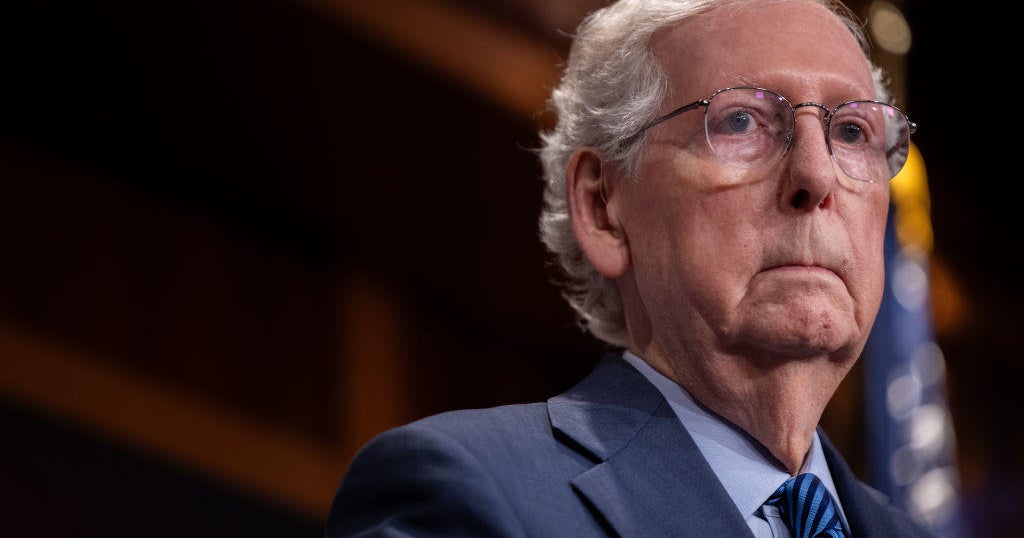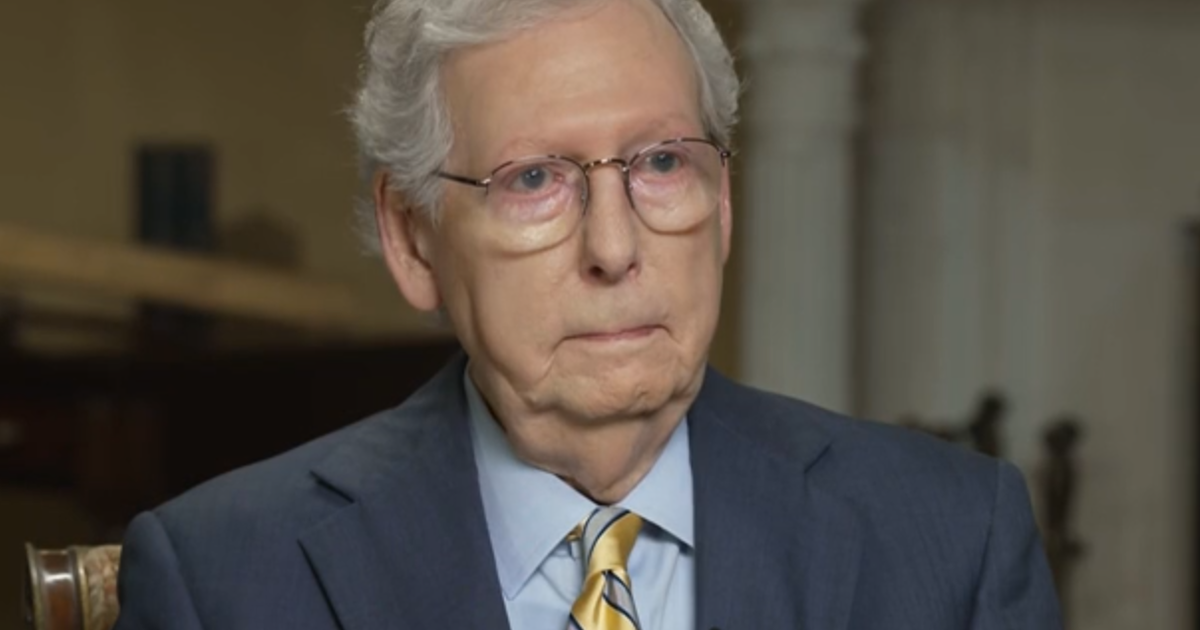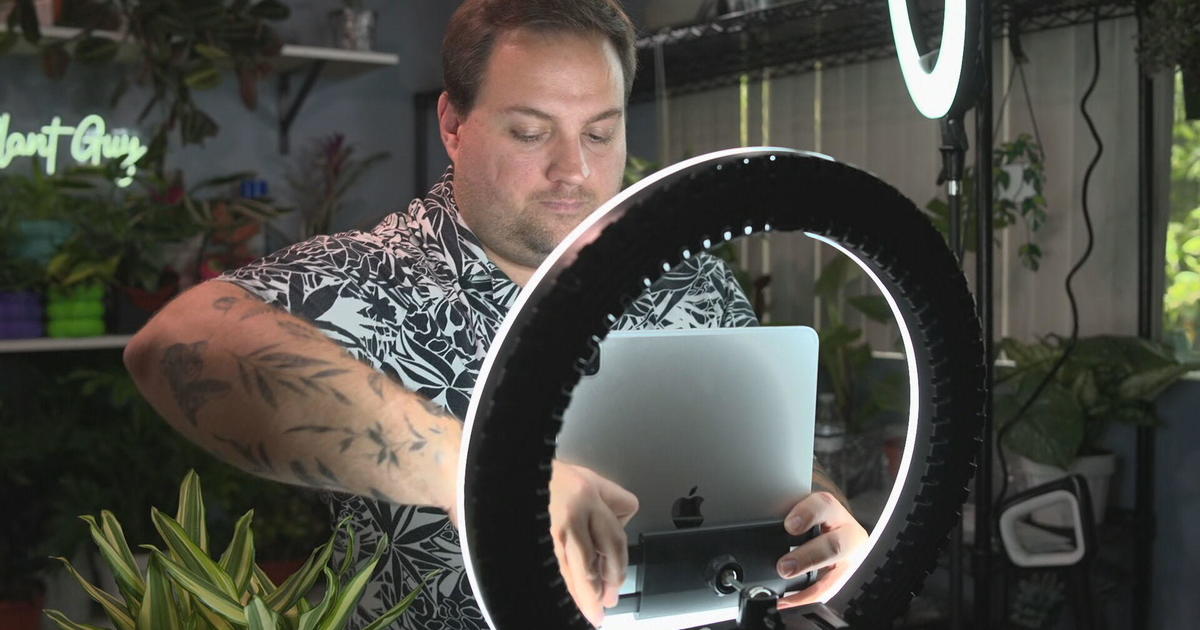Transcript: Dr. Scott Gottlieb on "Face the Nation," January 9, 2022
The following is a transcript of an interview with former FDA Commissioner Dr. Scott Gottlieb that aired Sunday, January 9, 2022, on "Face the Nation."
MARGARET BRENNAN: We go now to former FDA commissioner Dr. Scott Gottlieb, who sits on the board of Pfizer. Good morning to you, doctor.
DOCTOR SCOTT GOTTLIEB: Good morning.
MARGARET BRENNAN: You said we'll be running past the Omicron wave by Feb. Do you stand by that trajectory? And do we get to breathe a sigh of relief at that point?
DR. GOTTLIEB: Hopefully we do, I mean, many people, including myself, have predicted that Delta would be the last major wave of infection then Omicron and came along, which was- represented sort of divergent evolution, I think surprised us that the virus was able to mutate so heavily and evade the immunity that we have acquired. But if you look what's happening across the East Coast right now in New York City, Washington, D.C., Maryland, probably Florida as well have already peaked, maybe Delaware and Rhode Island. You're going to start to see that in the statistics this week. You're going to start to see those curves as epidemic curves bend down. You already seeing that in New York City and Washington, D.C. The risk right now is to the Midwest, where you have rising infection, where they aren't in the thick of their Omicron wave yet. And you have states that had high hospitalization rates going into this. They had a lot of Delta infection. They had been coming out of their Delta wave, so their hospital census was already high. And now they're seeing Omicron infections pick up. On the good side, hospitalizations are down relative to cases, but cases are up substantially, so it's pressing hospitals. Many of the hospitals on the East Coast are going to reach or surpass their previous hospitalization totals. New York City is probably the city that's best equipped to handle it, they're about 55% of the hospitalizations that they saw during that devastating first wave. But in other states, they're more pressed. They're close to 100% of the hospitalizations they saw in previous waves. Finally, on the good side, length of stay is down substantially, so length of stay has gone from 4 days to 1.6 days in the survey by Kaiser, for example. So that's allowing hospitals to turn over beds, but the sheer velocity of the spread right now and the number of hospitalizations is pressing them.
MARGARET BRENNAN: Yeah, the speed of this is just incredible. What should parents do over the next two to three weeks because the unprotected are those ages four and under? We know it's just not realistic for parents to not drop their kids off at daycare tomorrow or not send their kids to preschool.
DR. GOTTLIEB: Look, there's a lot of risk right now, I think you have to look in on what the precautions are in the settings in which you're putting your children and try to encourage those who are taking care of your children in those settings to put in place measures to try to protect them. The risk is to young children right now. If you look at New York City, for example, fully 55% of the hospitalizations of pediatric hospitalizations are children ages zero to four, and they only represent 26% of the population. So, we're seeing a lot of hospitalizations in those younger age groups where the children are largely unvaccinated- five to 11 as well, where vaccination rates are very low; only 16% of five to 11 year olds have been fully vaccinated. I think the old rules apply. Try to encourage social pods in those settings. Hand hygiene, I think masks can be helpful where they can be worn, It's hard with the very young kids; trying to keep kids distanced. The best thing that schools could be doing right now is serial testing. Again, hard to do with the very young kids, although you can do pooled samples like saliva tests and also keeping them in social pods. So, if you have a class of 10 trying to break it down, so all the kids aren't intermingling. So, if you have a single introduction, it's not going to take down a whole class.
MARGARET BRENNAN: So, the CDC guidelines, we've talked about this for years now. They continue to be changing. They continue to be murky. Can you help- if I tick through some of these basics, can you help give us some clarity here? The UK says 10 to 13% of people will still be infectious from COVID on day six. On day six in the United States, the CDC says you can go back to work, you can go back to school, but they tell you don't go to a restaurant and don't travel. What do you do on day six doctor?
DR. GOTTLIEB: Right. And look, the CDC has guidance recommended that you wear a mask for five days after your isolation period, recognizing that a certain cohort of people are still going to be showing the virus. I think what underlies the CDC recommendation there is a recognition that this is an epidemic that's not being instigated, spread if you will, by people who get diagnosed, isolate for five days and go back into public circulation on day six, while a certain percentage of them will still be infectious. They're not driving the pandemic. What's driving the pandemic right now is the fact that we're probably only diagnosing somewhere between one and five and one in 10 actual infections. And as a lot of people walking around with mild illness or asymptomatic infection who don't know it, who are spreading it. So, if you start from that premise and if CDC was sort of upfront about that premise, what it really tells you is that if you're- if you're someone who's isolated for five days and on day six, you're going to go back to work. You need to be mindful of what the setting is that you're reintroducing yourself into. Are you taking care of people who are vulnerable at home? Are you going into a health care setting or another setting where there's vulnerable people? And if you are, you need to be more vigilant, maybe use a diagnostic test to make sure you're no longer shedding virus. You certainly wear a mask in that circumstance. But I think if CDC was more granular, more descriptive in what they were actually doing and why. And the fact that they recognize that there's going to be a certain number of people who are infectious people could take more actions on their own.
MARGARET BRENNAN: If people can find a test, the Biden administration will begin distributing them to households. The reporting is by Jan. 15 they will start shipping out 500 million of them. That's not really going to help people on the east coast right now who are trying to find in the midst of this surge a way to test like you're describing.
DR. GOTTLIEB: Yeah, look, it's unfortunate we started this late, we should have done this earlier. You're right, these tests are going to be distributed as this epidemic is declining in many parts of the country, not all parts of the country. So, for certain parts of the country, the tests are going to get there in time or in time for the peak infection. I think they would have been better served by directly subsidising the tests and having them delivered through normal retail channels like pharmacies, rather than shipping these through the mail. We need to start to normalize the supply chain for the tools that people need to protect themselves from this pandemic. It's not just the diagnostic test, but also the vaccines and therapeutics. We need to start thinking about how we distribute these through normal retail channels where people are used to accessing health care services and not these government directed channels, which are going to make it more challenging for people to get these in a timely fashion.
MARGARET BRENNAN: You were very clear last Sunday that you will not be protected if you're wearing a cloth mask because this is an airborne virus. Given how transmissible this is, what counts as an exposure these days. Does the 15 minutes at six feet of distance mean anything, or is- does you walking down the street and passing someone by going to expose you just the same?
DR. GOTTLIEB: You know, look, I certainly don't think an outdoor setting represents the same level of risk, and that's been consistent all the way through, but the reality is that your risk is binary. You can have a casual encounter and contract the illness. You can have a prolonged encounter and not. CDC with those kinds of recommendations, about 15 minutes of cumulative exposure or things like that, six feet of distance they're trying to gauge on average where the highest risk of exposure occurs, and it occurs with prolonged exposures in confined settings with people who are infected. We know that. But the reality is, with an airborne illness like this, if you're in a setting, a confined saying that poor air circulation doesn't matter if you're six feet or 10 feet, you're going to be at risk of contracting it. And this isn't like radiation where you have a cumulative risk.
MARGARET BRENNAN: Right. Which is why the math matters so much. Dr. Gottlieb, thank you for your time today. We'll be right back with more. FACE THE NATION. Stay with us. Thanks a lot.



